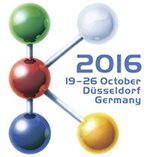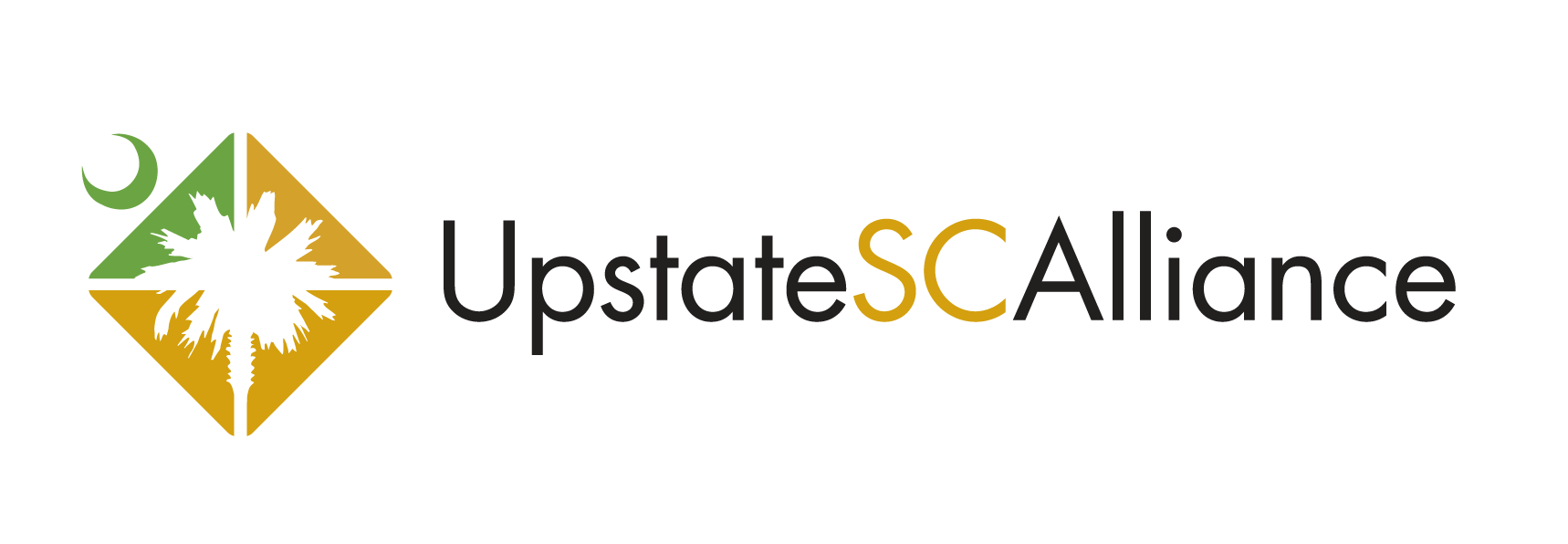Business Recruitment: A Glimpse into the Process
October 17, 2016 2016, in Düsseldorf, Germany. Occurring just once every three years, the last event drew 218,000 visitors and 3,200 exhibiters from 59 countries. With participants representing such an array of businesses from throughout the globe, it’s a valuable opportunity to make the case for why the Upstate is the perfect place to do business. The delegation is sponsored by the SC Department of Commerce, and includes other regional alliances.
2016, in Düsseldorf, Germany. Occurring just once every three years, the last event drew 218,000 visitors and 3,200 exhibiters from 59 countries. With participants representing such an array of businesses from throughout the globe, it’s a valuable opportunity to make the case for why the Upstate is the perfect place to do business. The delegation is sponsored by the SC Department of Commerce, and includes other regional alliances.
Before Jacob Hickman, our Director of Business Recruitment, heads off for a whirlwind three days of meetings at the K show, he shares insights about why the trip is a good investment, and an in-depth look at his role behind the scenes in the long game of economic development.
Q: What exactly will you be doing in Düsseldorf?
We’ve coordinated a number of meetings with plastic and rubber related manufacturers at the show, so we will divide those up evenly to where all the alliances are involved in an equal number of meetings. We expect a total of 50 to 60 meetings over two and a half days.
The show itself is a week. We decided to focus on just the first few days because the majority of the time, that’s when the leadership in the companies will show up.
What’s going on in plastics and rubber these days?
That’s a good question, and that’s why we go to shows like this. With the way that industries change and progress, just by being there and meeting with these companies we’ll learn new trends. This show will encompass just about everything that this industry does. It’s energy, industrial machinery, medical packaging plastics, wiring, tubing… The great thing about plastics and rubber is that those materials cross-pollinate with the industries that we focus on [advanced materials, automotive, aerospace, bioscience and energy].
With so much going on, what do you have to say to that catches people’s attention?
We have a handful of advantages in all industries. For this particular industry, plastics and rubber, they tend to be capital intensive, and also high energy users, both of which play really well to our advantages. Our overall cost structure is very low with our competitive workforce, power costs, and fixed costs as it relates to real estate taxes.
There’s also the sheer logistics of how companies manage materials coming in and out of the state and in and out of the country. We’ve got infrastructure with rail, such as the Inland Port in Greer, and good interstate connectivity, with Interstates 85 and 26 running through the Upstate, to enable them to move that material efficiently.
Where are the companies coming from?
This is a massive show, so companies will be represented from all over the world, which is why we go to a trade show like this and have a physical presence. At a smaller trade show, we might just send some representatives just to walk around and scope it out.
What do these meetings look like? Do you make presentation, or do you hear about what the companies want?
Both. It’s investigative on both ends. For us to speak intelligently about the advantages of Upstate South Carolina, we have to ask them about the company and their process. Do they need rail? Do they use the port? Do they use a lot of power? With those types of questions, we can craft our messaging to speak specifically to what their needs would be.
Who will you be dealing with?
It could be the owner, the CEO, the COO, the CFO. Those are typically the type of folks we deal with. From SC, the meetings will typically include a regional team like ours and somebody from the Department of Commerce.
Do you have interpreters on your team to help with language barriers?
We do. South Carolina has offices in different parts of the world. At this show we will have a few bilingual folks with us. If we’re meeting with a company, that means we have communicated previously and there’s some knowledge of the English language.
How much of their time will you get?
Typical discussions can be anywhere from 30 minutes to a little over an hour. It really depends on their familiarity with the U.S. market, the southeast, and then our state. They may already have done homework and been investigating the U.S., and have some idea of some of our neighboring states but haven’t met with us yet. They could have customers in the area.
But it could even be a smaller family-owned firm that’s never done business in the U.S., and they just don’t know where to start.
Are you seeing more large firms looking for headquarters, or smaller ones trying to get on the global scene?
It’s a little bit of both, but I would say there is a pretty strong trend among SMEs (small to medium enterprises) that are very interested in the global market, especially the U.S. market, but they’re not going to come in and set up a big facility and start producing immediately. They may want a soft landing scenario where they can come in and do some back office, sales, or servicing existing accounts, and grow organically. They don’t necessarily want to have that huge capital influx into an operation. They want to grow and make it more scalable.
How long is the process of setting up these meetings?
There’s a lot of planning involved. It takes a couple of months of identifying what our thresholds will be in terms of size and scope of the discussion. And with the size of the conference itself, there’s got to be some research on the people who will be there. The state is lead; we also sift the list through and look at companies we have worked with in the past.
How do you know when you’re getting a hit and it might move forward?
If they express interest in reviewing real estate, ask good questions, request a lot of very specific data, and also express interest in coming to the Upstate in the not-too-distant future to start looking at some these assets that we talk about and meet with other people in the area – that’s a good indicator.
Is it a long process from there?
It’s across the board. If they’re familiar with us and feeling the urgency to be here to support customer base, or they’ve reached capacity and simply need a new place for production, it could be 6 months to a year. Or it could be a two- to three-year process when the organization is small and knows nothing about us. Then we’re starting with an education process, and maybe a follow-up visit next year while we’re traveling, or from the S.C. Department of Commerce European office. We just keep communicating in between.
Some people might be surprised at how long it takes from the time you start the conversation.
Yeah, this is not a not a quick turnaround. In a lot of business development roles you do have that quick turnaround, but when you’re talking about substantial investment and major moves that have a tremendous impact on an organization, it’s a very methodical and timely process.
What are the intangibles that you use to sell the Upstate?
Companies ask all the time, “What’s the difference between you and North Carolina or Georgia?” My response is our community-based approach to economic development, and the sheer structure of the Upstate Alliance – how we are structured with public-private partnership, and 160-plus member investors. That is a strong support system that truly believes in what we do as a community and as an organization to attract business.
Because we are a small state as well, we’ve got a pretty fluid and efficient matrix of communication. So, when we get back a request for more information, we can find and filter information quickly. If you go to a larger area where they don’t communicate as well, it’s going to be more difficult to get answers to very specific questions. We’re much more responsive.
What is the most challenging part of this process?
I wouldn’t say there are a whole lot of challenges, just because we and the state have a system for doing this. It’s more about understanding who’s going to be there, and getting meetings set up. It’s about absolutely maximizing the potential of the event.
It sounds a little exhausting. Is it?
It’s very exhausting. Usually at an event like this you’ve got four or five days, and we’re cramming it into three. You don’t sit still. It can take you 30 minutes to walk to an appointment in the same show.
What’s the most fun?
Being there with other parts of the state and interacting with the growing companies, hearing about the technology advances, understanding industry trends. And exposing the region. There’s a lot of good opportunity here to put our best foot forward and earn a spot at the table when they start discussing expansion.
This is really what we are designed to do: try out different events and find out where the highest and best use of our time is. A big international platform like this is really in our sweet spot, because we’re such an international region. We’ve got experience in how we deal with international firms.
